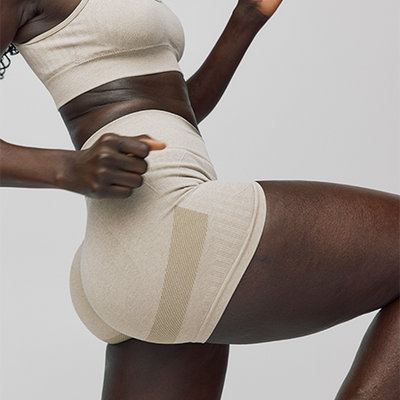

Wait—don't do it!
Here is our quick guide to navigating how to know what size menstrual cup to buy or if a menstrual disc is a better fit, as well as what information you should have on hand while you’re shopping.
Choosing the Right Menstrual Cup
Maybe you found yourself on our DIVA Cup size guide and even with the clear images and model-by-model breakdown, you still need help navigating the specifics.What Size Menstrual Cup Do I Need?
The DIVA Cup comes in 3 model sizes; Model 0, Model 1, and Model 2.Our general guidelines state that:
- If you have a lighter flow, strong pelvic floor muscles, or are a first-time user or under 18, the Model 0 is a great place to start!
- If you have medium-heavy flow, or are 18 or older, you are probably in the market for our most popular size, the Model 1.
- For those with a medium to very heavy flow, we have a larger cup which may also be a better fit if you’ve given birth or are over the age of 35.
The DIVA Disc, on the other hand, comes in one-size-fits most. It’s designed to be placed in the vaginal fornix—above the vaginal canal and not held in place by the pelvic floor muscles, but instead tucked up against the pubic bone. Menstrual flow collects higher up, and a seal isn’t required to ensure up to 12 hours of continuous period protection.
Of course, there are many variations to this and always exceptions to whether you need a larger size or a smaller size—but we had to start somewhere!
Below we’ll give you some additional things to note before selecting your reusable menstrual cup or disc.
Measure Your Cervix Height
Some people find menstrual cups a challenge, simply because they have a lower lying cervix. This is a completely normal anatomical variation but can be really helpful to know ahead of time!The average cervix height is between 45-55mm or 1.8”-2.25”. Cervix height reflects the distance from the vaginal opening to the tip of the cervix, as it protrudes into the vaginal cavity. The cervix lifts and lowers over the course of one menstrual cycle—higher during the first half of your cycle, lower as it nears menstruation again.
Measuring your cervix height requires placing a finger inside the vagina, feeling for the cervix (it feels a bit like the tip of your nose!), and then measuring the amount of your finger that passed beyond the vaginal opening. Do this several times, but primarily near menstruation to get a sense of your cervix height and whether you need a menstrual cup or disc.

What’s the difference between a menstrual cup and disc? A menstrual cup is longer and a bit narrower catch basin. A menstrual disc, however, is shallower and a bit wider. Both are made of flexible 100% medical grade silicone and fold down to the size of a tampon for insertion.
- A high cervix range is 55mm (2.25”) and more. Having a high or average height cervix (45-55mm/1.8”-2.25”) works well with a menstrual cup that has a longer catch basin.
- If you have a lower cervix height (44mm or 1.4” or less), a menstrual disc should work well! It has a shallow catch basin and sits higher up, beyond the vaginal canal, around the cervix in the vaginal fornix.

Chart Your Cycle / Measure Your Flow
Charting your cycle; the number of days of bleeding, the milliliters (ml) of menstrual fluid you have per day of menstruation, and which days you bleed the most or least, can help inform which size of menstrual cup or disc you choose.DIVA Cup -
- Model 0 holds 20 ml
- Model 1 holds 26 ml
- Model 2 holds 30 ml
If you’re only looking at flow volume, and you bleed a lot on most of your menstrual days, a cup or disc with a larger capacity might be the best bet for you so that you don’t have to worry about emptying it as frequently. If your flow is light, or sporadic, a Model 0 might be all that you need.
Another option is switching between a cup and a disc. The cup is great when your flow is lighter and/or your cervix is a bit higher up, whereas a disc is great when your cervix is lower and/or your flow is heavier!
Know Your Pelvic Floor Muscles
One additional consideration is the pelvic floor muscles. These muscles are incredibly responsive! Every time we sit, stand, jump, or run; they activate. If you’re highly athletic, these muscles might be getting a lot of additional conditioning and be quite strong. If you’re less athletic, or depending on the types of exercise you do, these muscles might be less conditioned and require some toning to hold a menstrual cup in place securely.After childbirth, because of a lot of pressure from carrying the baby and/or from vaginal birth, these muscles might have lost their tone. Some signs of weak pelvic floor muscles include bladder or bowel incontinence, difficulty with sexual function, or challenges with keeping your menstrual cup in place.
Regardless of why, if you think your pelvic floor muscles require conditioning or are struggling to keep your menstrual cup in place, speak with a pelvic floor physiotherapist for assessment and treatment.
So, “what size menstrual cup do I need?” You should buy a menstrual cup or disc that matches your personal anatomy, flow, and preferences. And when in doubt, contact our Consumer Experience Team to discuss how to know what size menstrual cup (or disc) to buy for your specific needs now that you’ve identified them!





















